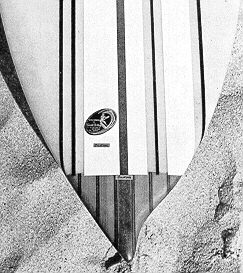 |
surfresearch.com.au
glossary : a
|
| home | catalogue | history | references | appendix |
 |
surfresearch.com.au
glossary : a
|
|
|
|
|
|
|
|
|
|
|
|
|
|
|
|
|
|
|
|
|
|
|
|
|
|
|
|
 Hot Buttered
Surfboards, 1974, air-spray mural by Martyn
Worthington
 Kuda Surfboards, 1975  McQuarrie Surfboards, 1978 |
 Flying Elephant
(Roger Dean for Osibisa,1971) airbrush on the bottom.
Abalone knee-board, shaped by Wayne Hutch, 5ft 4"  Crystal Tube Surfboards, 1975, air-spray mural by Martyn Worthington. |

SURFER Volume 13#Number 3
September 1972
Noel (?): Perfect
Wave
Manifestation, page 71
This 3 page article was Greg Webbers first inspiration toward his present wave-pool concept. In fact it was John Webber (Gregs elder bro) that got onto this first..as I remember him designing possible synthetic reefs for the Boot at Sth Bondi & 3rd Winki/Dead Mans at Fairy Bower..later in the more recent past this idea was championed by Cheyne Horan & Greg to the Bondi/Waverly Council to no avail
| asymmetric
(template/rails/tail) intentional non-symmetrical design usually to enhance performance in a preferred direction (right or left). Note that most handshaped boards are probably unintentionally asymmetric. Examples include... 1963 Midget Farrelly Hook tail. 1976 Nat Young Backhand (rails). 1979 Bob McTavish Asymmetric (template). 1983 Ed Angulo Asymmetric (sailboard template) See Bob McTavish : Asymmetrical, Seanotes Magazine 1978. Also see the AFX, Asymmetric Fin eXperiment, 2013. and Stu Nettle: The history of asymmetry and the pursuit of balance https://www.swellnet.com/news/design-outline/2016/04/13/history-asymmetry-and-pursuit-balance |
 |


|
|
|
|
|
|
|
|
|
|
|
|
|
|
|
|
|
|
|
|
|
|
|
|
|
|
|
| home | catalogue | history | references | appendix |